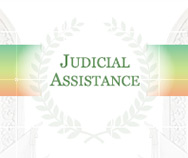Introduction
The Military Court
The military court is established out of consideration of the special features of the system of the armed forces and their combating tasks. The specific job of the military court is, through trying criminal elements who harm the state and national defense, to safeguard state security, the legal system and the order of the armed forces, consolidate the combat capability of the army, maintain the lawful rights and interests of the army men and other citizens. To combat the enemy, penalize criminals, protect the people and propagate the socialist legal system are the basic functions of the military court.
The military court consists of three levels: first, the Military Court of the People’s Liberation Army, second, the military courts of the various area commands, and units of the various branches of the armed services, and third, the army groups.
A military court consists a president, a vice president, two tribunals each with a presiding judge and a vice presiding judge, judges and clerks. Each of the military courts of various area commands, branches of the armed services and army groups consists of a president, judges and clerks.
In all military courts, a trial committee is set up charged with such tasks as discussing major or difficult cases and other work related to the trials. The committee is chaired by the court president. The procurators of the military procuratorates at the same level or rank may audit at the meeting of the committee.
The jurisdiction of military courts is restricted to specified criminal cases such as criminal cases committed by army men in active service and by workers on the payroll of the military, and other criminal cases whose trial and judgment are delegated to the military court by the SPC.
The Maritime Court
The maritime court handles first-hearing maritime cases or cases involving maritime businesses. It does not deal with criminal cases or other civil cases. Appeals or protests against verdicts of the maritime court are handled by the local higher people’s courts.
A maritime court consists of the maritime tribunal, maritime business tribunal, a research office, and other departments. The court has a president, vice presidents, presiding judges, vice presiding judges and judges. The president of the maritime president is proposed by the chairman of the standing committee of the local city people’s congress for appointment or removal by the standing committee of the people’s congress. The vice presidents, presiding judges, vice presiding judges, judges and members of the trial committee are proposed by the president of the maritime court for appointment or removal by the standing committee of the city’s people’s congress where the court is located.
The Railway Transportation Court
There are two levels of railway transportation courts, namely the intermediate railway transportation courts of the railway administrations and grassroots courts of the railway branch administrations. The trial activities of the intermediate railway courts are supervised by the higher people’s courts in the same regions.
The president of a railway court is proposed by the chairman of the standing committee of the local people’s congress for appointment or removal by the standing committee of the people’s congress of the region where the court is located. The vice president, the presiding judge, vice presiding judge and judges are appointed or removed by the standing committees of the local people’s congresses.
A railway court consists of a criminal tribunal, economic dispute tribunal and civil disputes tribunal. Specifically its jurisdictions cover: (1) civil and criminal cases that have occurred during railway transportation, (2) criminal and civil cases involving workers of railway bureaus, and (3) economic disputes having direct relationships with railway transportation departments.
The Forestry Court
The tasks of forestry courts are to protect the forests, deal with cases involving sabotage to forestry resources, serious responsibility cases and cases involving foreigners.
Forestry courts are set up by forestry bureaus (including timber water transportation bureaus) in specified forested regions. Intermediate forestry courts are set up at forestry administrations of the prefectures or regions where state-owned forests stand in large interlinked patches.









